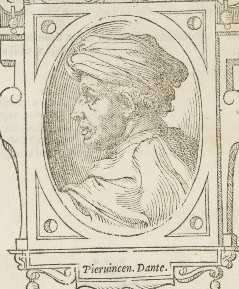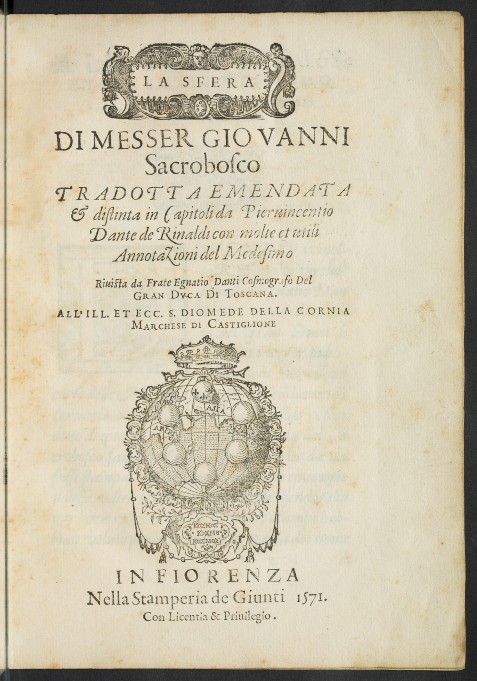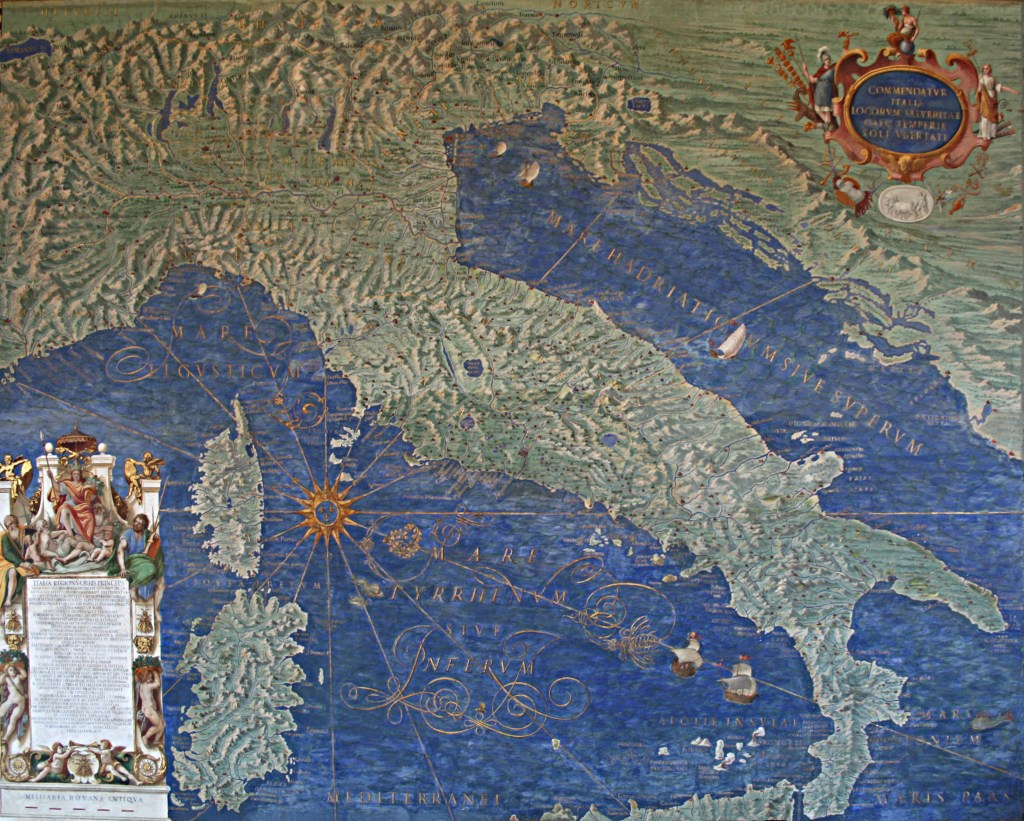This is the last post of August and the last on the “back to school” theme of the uses of Sacrobosco’s Sphere in teaching. The first three posts highlighted Spheres used in university settings and the last focused on monastery schools. This week’s Sphere was used (initially) for the private tutoring of children at home. It’s also a rare piece of evidence for female readership of the Sphere, because one of the children it was prepared for was a girl.

In the late 1490s, Piervincenzo Danti (ca. 1440 – 1512) took his family to a country villa to escape a plague outbreak in his native city of Perugia. During this period of solitude and confinement, he spent his time educating his children. To teach them astronomy, he translated Sacrobosco’s Sphere into Italian. He later commented that the child who showed the most aptitude for astronomy was his eldest daughter Teodora, who mastered not only the Sphere but a work on the astrolabe and an almanac as well. Teodora Danti (c. 1498 – c. 1573) went on to become a well-known artist, although she has since fallen into obscurity and there are no extant works attributed to her. The sole biographical information about her (except for the mention in her father’s Sphere translation) is an entry in Lione Pascoli’s Vite de Pittori, Scultori, ed Architetti Perugini (Lives of Perugian Painters, Sculptors and Architects) (1732). Pascoli describes her as a painter, mathematician, philosopher and poet. According to Pascoli (who offers no citations), she wrote poetry, a commentary on Euclid and a treatise on painting.
Piervincenzo’s sphere included new information about the heavens and the earth. For example, after the section in which Sacrobosco claims that the torrid zone (the region around the equator) is too hot to support life, Piervincenzo noted: “That the torrid zone, and the two frigid zones are uninhabitable, Christopher Columbus in the year 1491 showed us to be false,” because his voyage took him into lands within the torrid zone and he discovered that these lands did indeed have inhabitants.
He also gave his version of the Sphere real local flavor. For example, at the end of the section “on the rotundity of the heavens,” Piervincenzo added the following geometrical example:
“So, if there are two cities, and one of them is almost the shape of a pentagon, like Perugia, and the other is almost round like Florence, then [the area of] Florence will be much larger than [that of] Perugia, even though the length of the city walls is equal.”
Danti, La Sfera (1571), p. 11
One can imagine Piervincenzo demonstrating this to his children, or asking them to work it out themselves. After the next chapter, “that the earth is round,” he notes that, the more northerly a region is,
“the more stars near that Pole never fade. This occurs near the Arctic Pole here at Perugia, where the constellations of Ursa Minor, the Dragon, Cepheus and Cassioppea never set, and some others, like Ursa Major and the Serpent remain partly above the horizon.”
Danti, La Sfera (1571), 13-14
And finally, after the chapter on the five climactic zones, he notes that Perugia is “almost in the same latitude as Amaseia, the homeland of Strabo.”
Piervincenzo’s translation of and commentary on Sacrobosco’s Sphere remained in manuscript until 1571, when his grandson, Egnatio Danti (1536 – 1586), arranged for it to be printed.

Egnatio Danti was the son of Piervincenzo’s son Giulio Danti (1500 – 1575). In 1562, Egnatio became a cosmographer to Cosimo I when the Duke asked him to prepare maps and a large terrestrial globe that still adorn the Sala delle Carte, or Map Room, of the Palazzo Vecchio in Florence. Egnatio wrote widely circulated works on how to make and use an astrolabe, as well as authoring works on other astronomical topics. Cosimo commissioned him to give public mathematical lectures and to study the reform of the calendar. As part of his study of calendar reform, Egnatio mounted astronomical instruments on the outer wall of the church of Santa Maria Novella in Florence, which he used to determine the precise date of the vernal equinox.
It was in this period that he arranged for the publication of his grandfather’s translation of the Sphere. Indeed, the printed sphere, with its references to multiple family members – Piervincenzo, Teodora, Giulio and Egnatio – may well have been calculated to enhance the family’s reputation. This Italian sphere was linked to three generations of the Danti family, whose members were known for an impressive array of accomplishments in painting, sculpture and architecture, as well as mathematics, astronomy and cartography.


Further reading
Kathleen Crowther, Ashley Nicole McCray, Leila McNeill, Amy Rodgers and Blair Stein, “The Book Everybody Read: Vernacular Translations of Sacrobosco’s Sphere in the Sixteenth Century” Journal for the History of Astronomy 46 (2015): 4-28.
Piervincenzo Danti, La Sfera di Messer Giovanni Sacrobosco (Fiorenza: Nella Stamperia de Giunti, 1571).
J. L. Heilbron, The sun in the church: cathedrals as solar observatories (Cambridge, MA, 1999), 66-7.
Lione Pascoli, Vite de pittori, scultori, ed architetti perugini (1732), pp. 75-9. Pascoli’s entry on Teodora Danti has been translated in Julia K. Dabbs (ed.), Life stories of women artists, 1550–1800: an anthology (Burlington, 2009), pp. 209-12, with introductory material by Dabbs on pp. 205-8.
One reply to “The Danti Family Sphere”